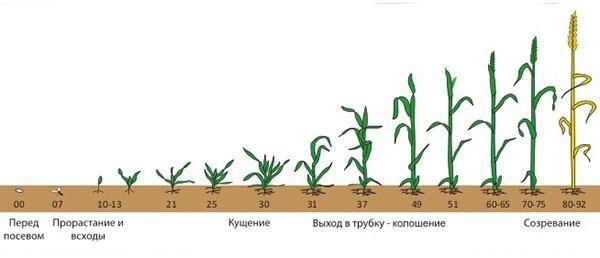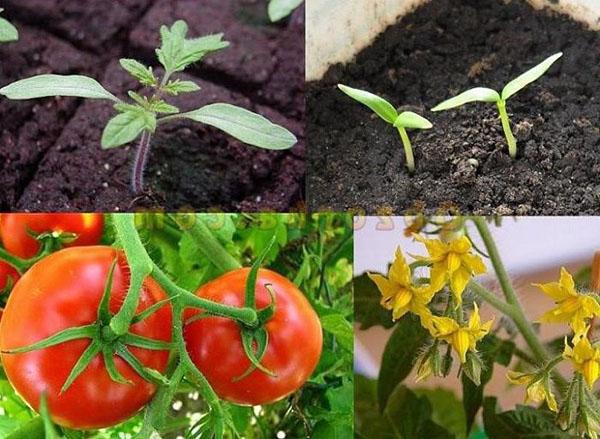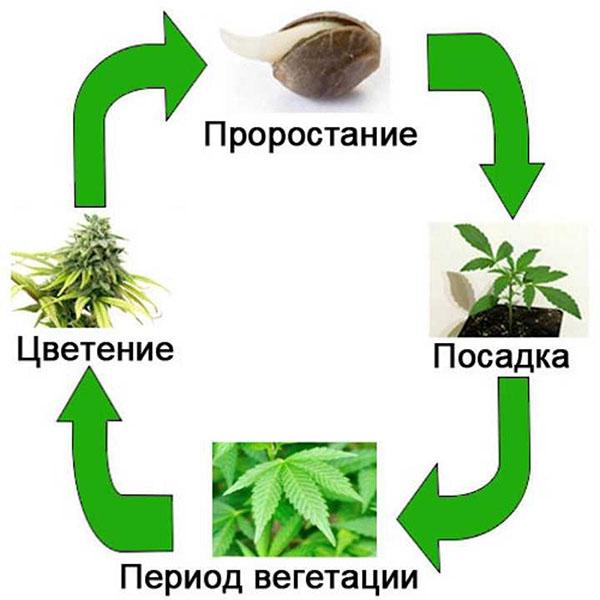Vegetative period in plants, features of the development of various crops
 Many gardeners confuse the concept of the growing season in plants with the growing season of crops. These terms differ significantly from each other, in the first case we are talking about a certain time interval of development in a specific climatic zone. The second term refers to the period of activity of certain species and varieties.
Many gardeners confuse the concept of the growing season in plants with the growing season of crops. These terms differ significantly from each other, in the first case we are talking about a certain time interval of development in a specific climatic zone. The second term refers to the period of activity of certain species and varieties.
What is the vegetative period in plants

Each of the known plant species has its own growing season.
If we talk about trees that grow at the equator or in the tropical zone, then their development is a little different. Let's get acquainted with this using the example of a banana, the term in question takes into account the interval from the moment of flowering to the harvest of the first harvest. After harvesting the fruit, the tree remains green for a long time, but this interval is not considered the vegetative period of the plant.
What is the growing season
 The specified term refers to crops that grow in a specific climatic zone. Let's look at the example of vegetables and fruit trees in our orchards and vegetable gardens.
The specified term refers to crops that grow in a specific climatic zone. Let's look at the example of vegetables and fruit trees in our orchards and vegetable gardens.
The development of perennial crops throughout the season can be roughly divided into several phases:
- vegetative development during the warm season;
- autumn transition period;
- inactive resting phase;
- transitional spring period.
This cycle of perennial crops in our climatic zone repeats every year. The vegetation period of plants consists of three points (first, second and fourth). In winter, perennials are dormant, metabolic processes in them stop. Depending on weather conditions, the inactive phase may start earlier than usual or be prolonged. This is influenced by temperature fluctuations and precipitation in the form of rain or snow.
The growing temperature of plants depends on the specific species and variety. For example, cabbage seeds sprout much earlier than tomato seeds, and apricot tree blooms before cherries, apples or pears. Biologists believe that to start the development of most crops, it is enough to heat the soil to a temperature of +5 degrees. This applies to fruit trees and vegetables.
The introduction of organic or mineral fertilizers into the soil will help accelerate the vegetative growth of the plant.
It should be noted that the growing season of annuals differs from the phases of development of perennial crops. The beginning of the process in such plants is usually marked by seed emergence. The end of the growing season determines the drying of the tops. If plants give several harvests during one season, then the growing season is considered to be the period from the formation of inflorescences to the ripening of the crop.
How to determine the growing season
 The development time of different types and varieties of crops is significantly different. Depending on the characteristics of a particular plant, this interval can range from several days to 3 or more months.
The development time of different types and varieties of crops is significantly different. Depending on the characteristics of a particular plant, this interval can range from several days to 3 or more months.
The duration of the growing season is influenced by:
- soil condition in the garden;
- weather in a particular area;
- illness and pests;
- hereditary characteristics of cultures.
Depending on the combination and influence of all these factors, the time of plant development from the moment of planting to the ripening of the crop can reach 9 months. The harvest of some garden crops in our climatic zone does not have time to fully ripen. In this case, they say that the growing season did not end correctly.
The growing season is easy to determine; for this, you should read the information on the seed bag. Here, the manufacturer indicates the time for a favorable time for planting the seeds and the estimated time for harvesting. Potato development begins with the formation of the first sprout and ends after the tops have dried out. At this time, you can start harvesting. In fruit trees, the growing season begins with swelling of the buds, ends with leaf fall in the autumn.
Features of the development of different types of crops
 Each plant growing in a specific climatic zone has its own developmental characteristics.
Each plant growing in a specific climatic zone has its own developmental characteristics.
Let's get acquainted with this issue in more detail:
- Vegetation potatoes different varieties lasts for 115-130 days. First, a sprout appears on the surface of the soil, then the phase of flowering and pollination comes. At this time, the formation of the crop harvest begins, in the place of the inflorescences fruits with seeds appear. The development of potatoes ends after the tops have dried.
- The growing season of cucumbers depends on the characteristics of the variety, in early maturing crops it is 95-100 days, in late crops - 105-120 days. From the moment of emergence to the beginning of flowering, at least 1-1.5 months pass, after which the formation of the crop begins on the bush. Along with this, flowering continues. In early autumn, the bush dries up.
- Short growing seasons have early ripe tomato varieties from 60 to 75 days for ultra-early varieties, 75-90 days for early varieties, 125-130 days for late-ripening varieties.
The use of seedlings will help speed up the growing process in vegetable crops. Seeds are sown in late February or early March.
After the onset of stable warm weather and the threat of recurrent frosts has passed, the seedlings are moved to a permanent place in the open ground.
The development of trees is different from the vegetation of vegetables. Active plant growth begins in early spring with the onset of warm weather with an average daily temperature of +5 degrees. At this time, the process of sap flow begins, the buds open. The growing season ends in late autumn after the leaves fall.